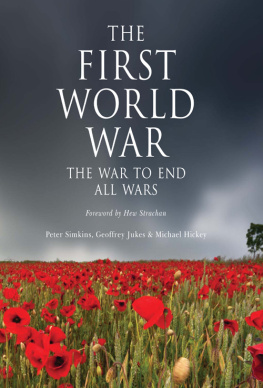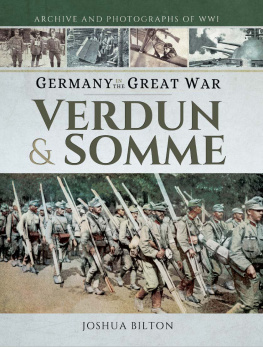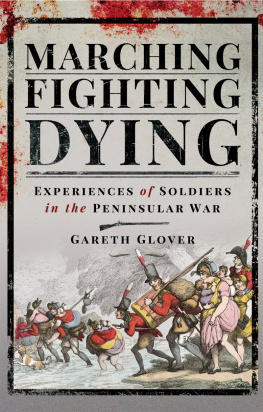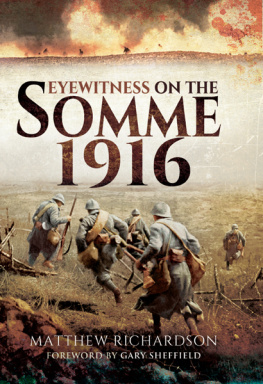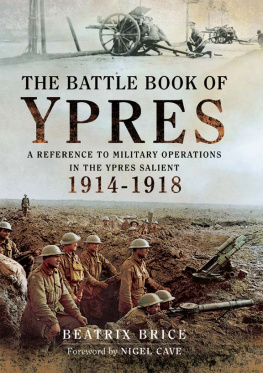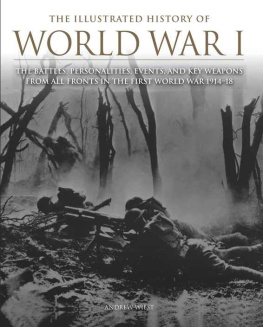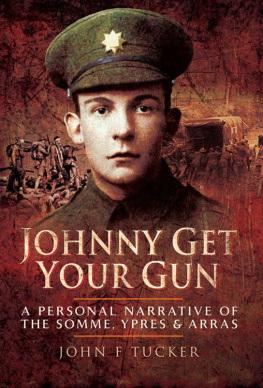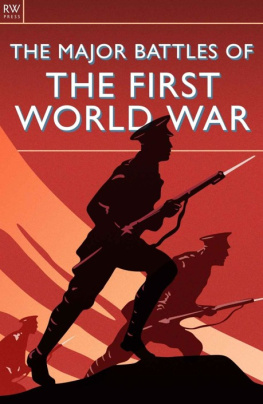THE
FIRST
WORLD
WAR
THE WAR TO END ALL WARS
Peter Simkins, Geoffrey Jukes and Michael Hickey
Foreword by Hew Strachan
CONTENTS
FOREWORD
By Professor Hew Strachan
The First World War was fought on many fronts intensively and simultaneously. In this respect it bears direct comparison with the Second World War. In the Second World War, the relationship between fronts, and the co-ordination of their efforts, would be called grand strategy. But this was not a phrase known or used in 19141918. Most of the campaigns described in this volume were self-contained in their origins and even in their conduct. They represented national efforts made in pursuit of national goals.
In this respect the First World War became a world war because it conflated wars that had lives and directions of their own. It began in the Balkans. As such it was the third Balkan war fought in rapid succession since 1912, and in most respects the interests of the principal Balkan states in the war never ranged beyond the Balkan peninsula. Serbia, Bulgaria and Romania all sought local objectives. The exception was the most reluctant of the Balkan belligerents, Greece, which had eyes on territory in Asia Minor. But that conflict the one fought over the Ottoman Empire makes the same point: it too began before 1914 and it did not end in 1918. In fact its conclusion was reached with the establishment of modern Turkey in 1923.
Only two powers, one on each side, fully confronted the fact that they were fighting a multi-front war. Britain was of Europe but not in it; moreover it had sprawling and vulnerable global interests. These included India and a network of colonial bases between Delhi and London. Their sizeable Muslim populations were intimately affected by the fate of Islams Holy Cities, which lay within the Ottoman Empire. The pursuit of grand strategy therefore found its most coherent form in the debates of the British cabinet as it weighed the priorities of competing commitments. These went to the most basic issues of war and peace. Should Britain introduce conscription in order to raise a mass army? Should it not concentrate on what it could do best, providing the arms and money for other powers on the European mainland to fight? The resulting discussions were frequently acrimonious, and after the war the memoirs of the participants flung accusations that made easterners and westerners, frocks and brasshats terms of abuse rather than precise descriptions. In reality the categories were never that neat, and the vigour with which the various options were canvassed bore testimony to the strength, not the weakness, of democracies in effective decision-making.
Germany was more genuinely divided between easterners and westerners, but here the casualty was strategy itself. It stood at the physical heart of Europe, and it was the mainstay of the Central Powers alliance. Its armies could go east or west with comparable facility, but it never found a consistent policy with which to determine their deployment. Moreover, as Peter Simkins makes clear in his contribution to this volume, by 1918 Germanys most important voice in the wars direction, Erich Ludendorff, had lost his way. By then its allies were critically dependent on Berlin not only for weapons and money, but also for military advice and leadership. Germany could not stretch its resources that far.
The First World War may in some respects have begun before 1914 and continued after 1918, but this does not mean that fighting was continuous in this period, however defined. Even in the middle of the war two fronts enjoyed periods of comparative quiet. Both fall within the purview of Michael Hickeys section of this book. In the autumn of 1915 Serbia, the country for whose defence the Entente powers of Russia, France and Britain had at least nominally gone to war, was overrun. Confronted by Austria-Hungary and Germany from the north and Bulgaria from the east, its army fell back through Albania to the Adriatic Sea. From here it was evacuated via Corfu to Thessalonika. Throughout 1916, 1917, and much of 1918, the Macedonian front was quiet enough for the British troops there to be known as the gardeners of Salonika. Then in mid-September 1918 it roared into life, and the Allied forces, led by the Serbs, knocked Bulgaria out of the war and threatened what Churchill saw as the soft underbelly of Europe.
Six months after the collapse of Serbia, in April 1916, a British division, besieged at Kut-el-Amara on the River Tigris in Mesopotamia, surrendered to the Turks. Here too the front went quiet. The British did not resume their advance on Baghdad until the following winter, taking the city on 11 March 1917. On the Turks other southern front, in greater Syria, there were similar pauses, the product not only of different priorities but also of the weather and of supply problems.
Serbia, Macedonia, Mesopotamia and Palestine are all treated here as part of the Mediterranean theatre. And so they were for a power like Britain that waged economic war through its mastery of the worlds oceans and used the sea to project its forces overseas. But that was not how it seemed to Turkey. It had one front, in the Caucasus, which determined the forces available for its other fronts, including in 1915 Gallipoli. However, here the Caucasus is treated by Geoffrey Jukes as part of the Eastern Front. That was precisely the context into which it fitted for Germany: a Turkish thrust into Georgia and Azerbaijan could draw Russian troops away from the Eastern Front. The latter ran from the Baltic states in the north, through Poland, to Galicia in the south. When Romania entered the war on the side of the Entente in 1916, the Eastern Front extended yet further, as Russia found to its cost. Romania managed to divert German and Austro-Hungarian troops from Russia, but then required Russia to send troops to help it. Geoffrey Jukes concludes that by the winter of 19161917 the defence of Romania had become the principal preoccupation of Stavka, the Russian high command.
The message here is that no one theatre of war could in reality be treated in isolation from its neighbour. Romania was a Balkan power; the fighting in Serbia had implications for Russia; the frontiers of both Germany and Austria-Hungary straddled the compartments into which this book is logically divided. Much of Viennas war effort was directed against Italy, and so undermined its conduct of the war against Russia. But when in October 1917 it achieved one of the most spectacular victories of the war, at Caporetto on the River Isonzo, the response of Italys allies had repercussions for the war in the west, not the east. French and British divisions were despatched to Italy, and the Supreme War Council was created to coordinate the Allies efforts a process which would culminate with the appointment of Ferdinand Foch as Allied Supreme Commander in March 1918.
Peter Simkins acknowledges this interdependence, but still argues that the Western Front was the heart of the war. The fact that others agree with him is recognised by his being allowed twice as much space to discuss a smaller theatre of war (in geographical terms) as is each of his fellow contributors. And he is probably right. Germany was the mainstay of the Central Powers, and however many divisions they sent to other fronts, the total never exceeded that on the Western Front. Moreover, for Britain too the Western Front was an irreducible minimum, for two sensible strategic reasons. First, it had entered the war to secure the neutrality of Belgium. It could not afford to have an over-mighty continental power threatening its principal sea-lanes and imperial communications. Secondly, its chief ally in this endeavour was France. France had been invaded. The need to drive the Boche from its homeland, to recover its industries, to restore its frontiers and to liberate its peoples gave a dynamism and intensity to the Western Front probably unequalled elsewhere. There were no long pauses here, and when armistice came it meant victory for one side and defeat for the other.

